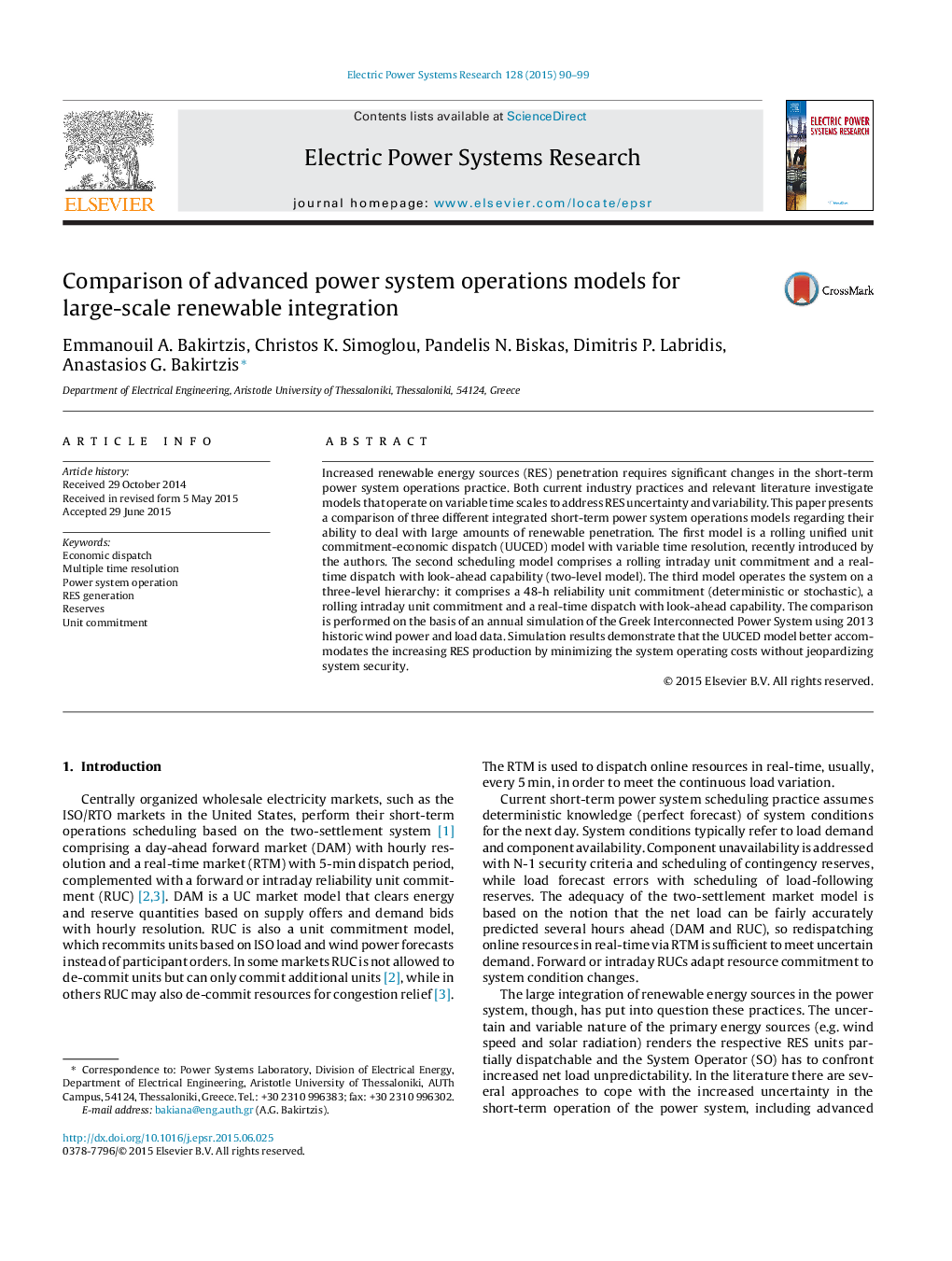| Article ID | Journal | Published Year | Pages | File Type |
|---|---|---|---|---|
| 7112634 | Electric Power Systems Research | 2015 | 10 Pages |
Abstract
Increased renewable energy sources (RES) penetration requires significant changes in the short-term power system operations practice. Both current industry practices and relevant literature investigate models that operate on variable time scales to address RES uncertainty and variability. This paper presents a comparison of three different integrated short-term power system operations models regarding their ability to deal with large amounts of renewable penetration. The first model is a rolling unified unit commitment-economic dispatch (UUCED) model with variable time resolution, recently introduced by the authors. The second scheduling model comprises a rolling intraday unit commitment and a real-time dispatch with look-ahead capability (two-level model). The third model operates the system on a three-level hierarchy: it comprises a 48-h reliability unit commitment (deterministic or stochastic), a rolling intraday unit commitment and a real-time dispatch with look-ahead capability. The comparison is performed on the basis of an annual simulation of the Greek Interconnected Power System using 2013 historic wind power and load data. Simulation results demonstrate that the UUCED model better accommodates the increasing RES production by minimizing the system operating costs without jeopardizing system security.
Related Topics
Physical Sciences and Engineering
Energy
Energy Engineering and Power Technology
Authors
Emmanouil A. Bakirtzis, Christos K. Simoglou, Pandelis N. Biskas, Dimitris P. Labridis, Anastasios G. Bakirtzis,
